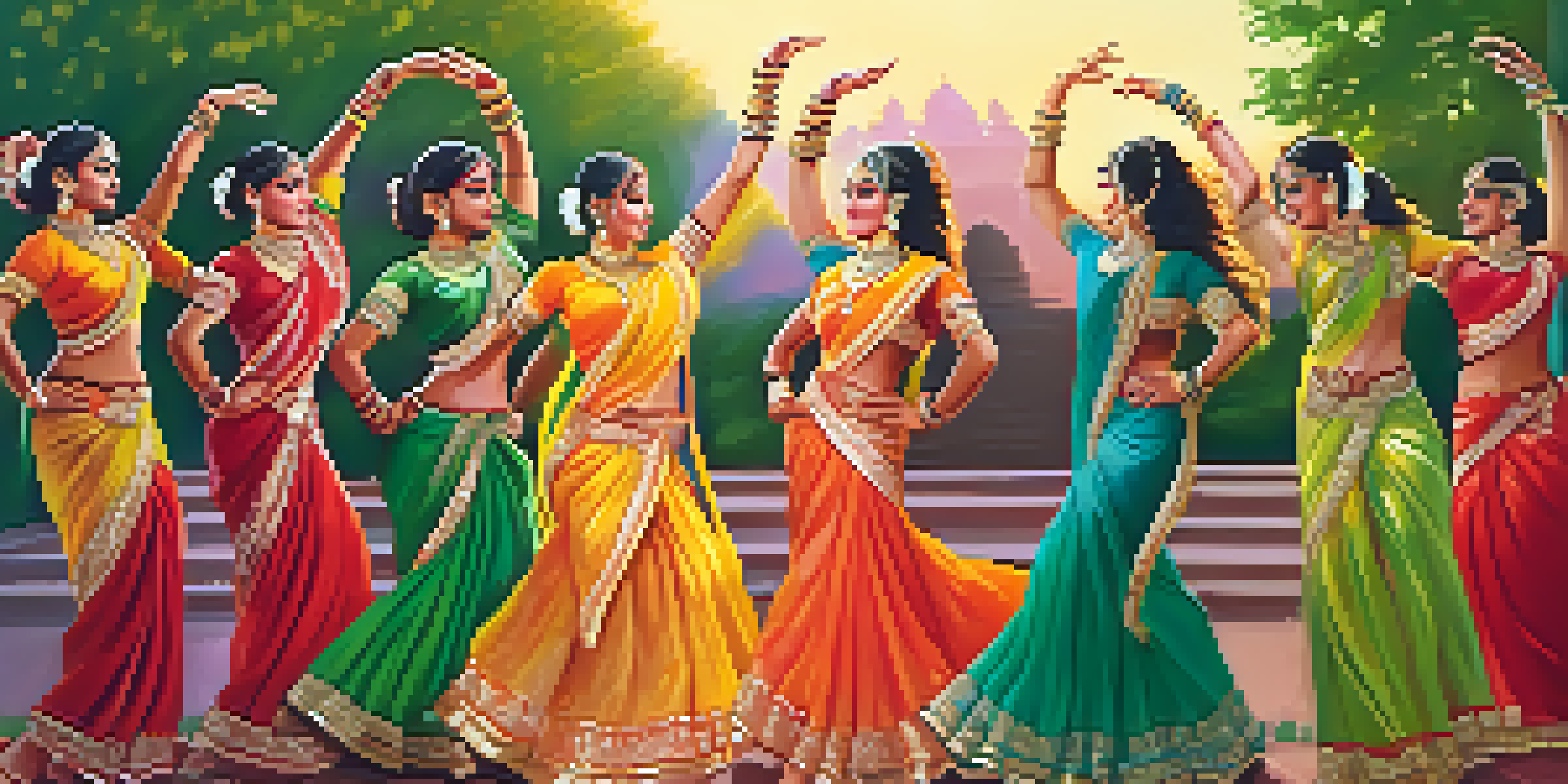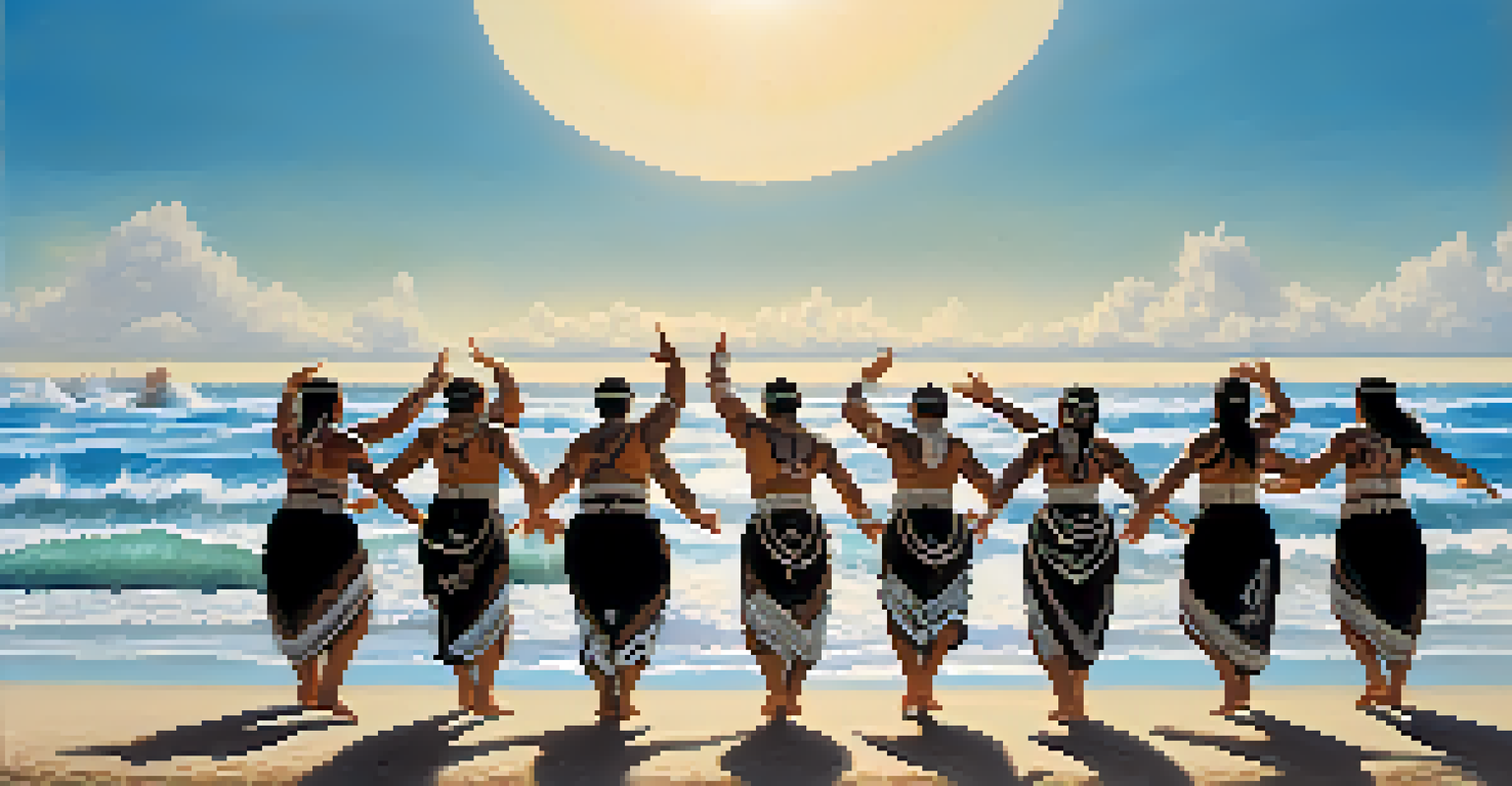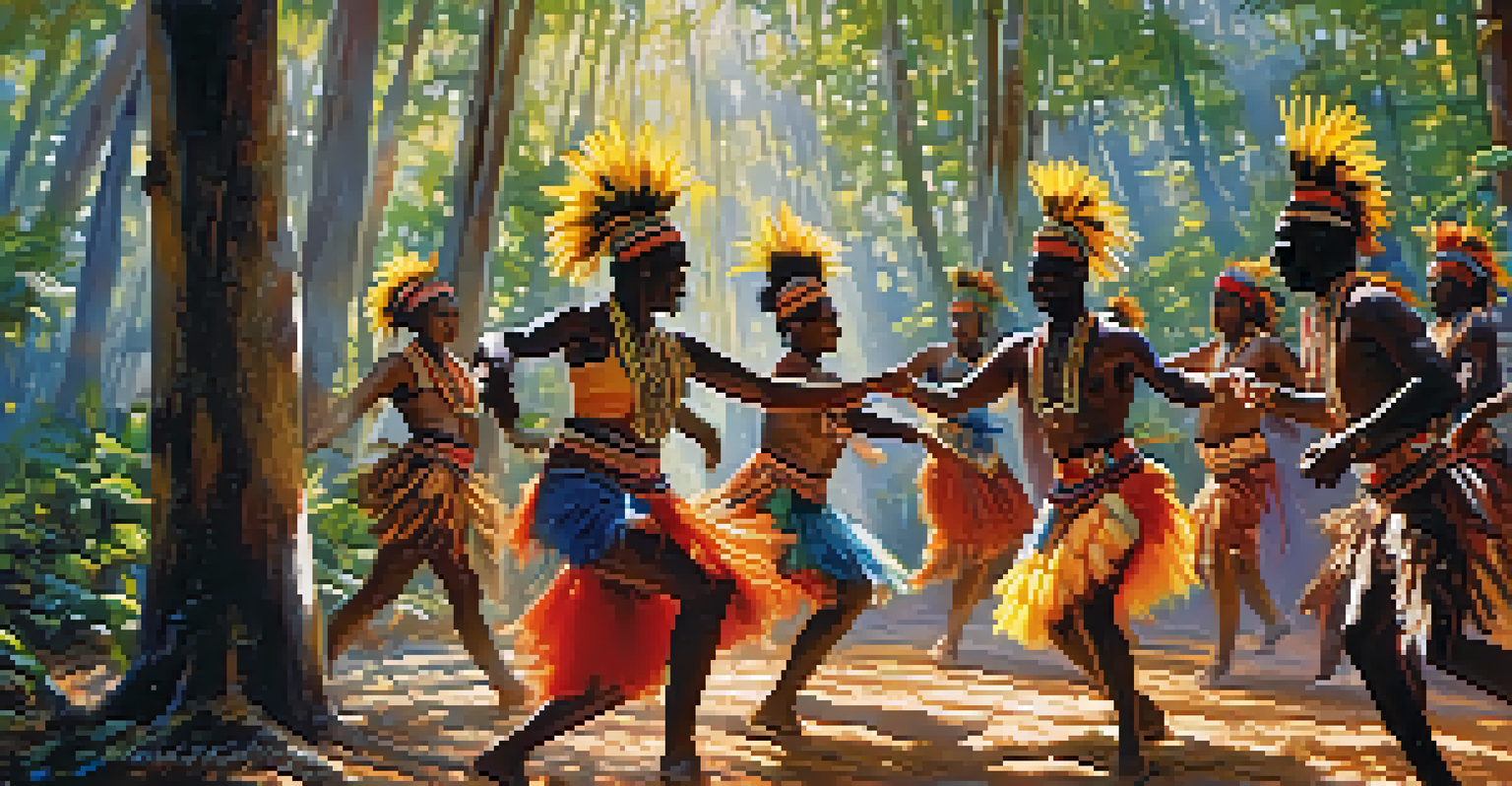Cultural Identity in Traditional Dance Across the Globe

Understanding Cultural Identity and Its Importance
Cultural identity is the sense of belonging to a particular group, shaped by shared experiences, values, and traditions. It plays a crucial role in how individuals perceive themselves and interact with the world. This identity can be expressed in various forms, with traditional dance being one of the most vibrant and dynamic outlets.
Dance is the hidden language of the soul.
Through dance, communities celebrate their history and heritage, preserving customs that might otherwise fade away. For instance, the vibrant colors and rhythms of a traditional Indian dance tell stories of gods and ancient civilizations. These performances create a sense of pride and reinforce connections among community members.
Moreover, traditional dances often serve as a means of passing down knowledge from generation to generation. By participating in these dances, younger generations learn about their culture, fostering a sense of responsibility to keep these traditions alive.
Traditional Dance as a Reflection of Cultural Diversity
Around the world, traditional dances vary greatly, each reflecting the unique cultural backgrounds of different communities. From the flamenco of Spain to the hula of Hawaii, these dances showcase not only artistic expression but also the stories of the people who created them. Each movement, costume, and rhythm is steeped in meaning.

For example, the Maori haka from New Zealand is not just a dance; it's a powerful expression of unity and strength, often performed to honor guests or commemorate events. Similarly, the African tribal dances incorporate intricate footwork and vibrant music, connecting participants with their ancestry and land.
Cultural Identity Through Dance
Traditional dance serves as a vibrant expression of cultural identity, connecting individuals to their community and heritage.
This diversity highlights how traditional dance can bridge gaps between cultures, fostering understanding and appreciation for one another's heritage. As globalization continues to increase, sharing these dances can cultivate respect for different lifestyles and beliefs.
The Role of Traditional Dance in Celebrations and Rituals
Many cultures incorporate traditional dance into significant life events and rituals, marking milestones like weddings, births, and harvests. These dances often serve as a communal celebration that strengthens bonds within the community. For example, in many Native American cultures, dance plays a critical role in ceremonies that honor the earth and its resources.
Culture is the widening of the mind and of the spirit.
During these ceremonies, the movements often symbolize the relationship between the dancers and the spiritual world, creating a sacred atmosphere. The celebration of the harvest in various cultures frequently includes traditional dances that express gratitude to nature for its bounty.
In these contexts, dance becomes more than an art form; it transforms into a medium for expressing emotions and reinforcing cultural values. Such performances remind participants and spectators of their shared identity and collective history.
How Traditional Dance Preserves Language and Stories
Traditional dances often incorporate storytelling, with movements conveying narratives that might not be captured in written form. This aspect makes dance an invaluable tool for preserving languages and oral traditions that are at risk of disappearing. For instance, the storytelling element in the African dance forms often involves the use of gestures that symbolize specific events or lessons.
In many Indigenous cultures, dance serves as a living history lesson, teaching younger generations about their ancestors and their struggles. The stories told through dance can evoke a deep emotional response, making the lessons unforgettable.
Dance as a Storytelling Medium
By incorporating narratives and gestures, traditional dance preserves languages and stories, ensuring cultural traditions endure.
By engaging with these performances, audiences become active participants in the storytelling process, ensuring that traditions endure. This unique blend of movement and narrative keeps cultural languages alive in a powerful, immersive way.
Impact of Globalization on Traditional Dance Practices
Globalization has brought many changes to traditional dance practices, leading to both positive exchanges and challenges. On one hand, it has increased visibility for traditional dances, allowing cultures to share their heritage with a wider audience. For instance, the rise of social media has enabled dancers from remote communities to showcase their art, fostering appreciation and support worldwide.
However, globalization can also threaten the authenticity of traditional dances, as they may be commercialized or adapted to fit modern tastes. This dilution can lead to a loss of cultural significance, where the original meanings of the dances may be overshadowed by performance for entertainment.
Navigating these challenges requires a delicate balance between embracing new influences and preserving the core elements that define traditional dance. Communities must find ways to adapt while honoring their roots, ensuring that their cultural expressions remain genuine.
The Healing Power of Traditional Dance
Traditional dance can also serve as a powerful tool for healing, both individually and collectively. In many cultures, dance is used in therapeutic contexts to express emotions, release stress, and promote mental well-being. For example, in certain Indigenous communities, dance rituals are utilized to connect with ancestors and seek guidance during difficult times.
Participating in traditional dance can foster a sense of belonging and community, which is vital for emotional health. Through movement, individuals can share their struggles and triumphs, creating a support network that encourages healing.
Globalization's Impact on Dance
While globalization increases visibility for traditional dances, it also poses challenges in maintaining their authenticity and cultural significance.
Moreover, these healing practices often intertwine with spiritual beliefs, reinforcing the idea that well-being is connected to cultural identity. By participating in these dances, individuals not only honor their heritage but also nurture their mental and emotional health.
Looking Ahead: The Future of Traditional Dance
As the world evolves, traditional dance faces both challenges and opportunities for growth and adaptation. Younger generations are increasingly finding innovative ways to blend traditional elements with contemporary styles, creating new forms of expression that resonate with modern audiences. This fusion can breathe new life into aging traditions, ensuring their continued relevance.
However, it's essential to approach this blending with respect and cultural sensitivity. Maintaining the core values and teachings of traditional dances while embracing new influences is key to preserving their integrity.

Ultimately, the future of traditional dance lies in the hands of the communities that create and sustain it. By nurturing these traditions and encouraging innovation, we can ensure that these vibrant expressions of cultural identity continue to thrive for generations to come.